Wheel Size: 29’’ front / 29’’ rear
Suspension Travel:
- Frame travel: 150 mm
- Fork travel: 150 mm
Geometry Highlights:
- Sizes offered: S, M, L, XL
- Headtube angle: 64.5°
- Reach: 484.5 mm (size Large)
- Chainstay length: 448 mm
Frame Material: Aluminum
Price: Complete bikes starting at $5,399 USD
Wheel Size: 29’’ front / 29’’ rear (27.5’’ option with MX upper link)
Suspension Travel:
- Frame travel: 170 mm
- Fork travel: 170 mm
Geometry Highlights:
- Sizes offered: S, M, L, XL
- Headtube angle: 63.5°
- Reach: 480 mm (size Large)
- Chainstay length: 448 mm
Frame Material: Carbon fiber or aluminum
Price: Complete bikes starting at $5,499 USD
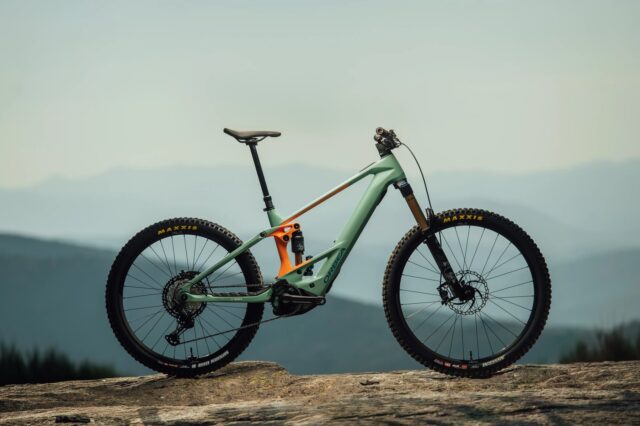
Intro
We were quite impressed by the prior version of the Orbea Wild, which combined precise handling with tremendous confidence at speed. The new Wild bumps up in travel from 160 to 170 mm but also gets some frame construction and geometry refinements aimed at increasing stiffness and descending capability. It also gains a sibling in the new, aluminum-only Wild ST which offers more Trail-focused geometry and 150 mm of travel. Both bikes get Bosch’s new Performance Line CX motor, too. There’s a lot to talk about, so let’s dig in.
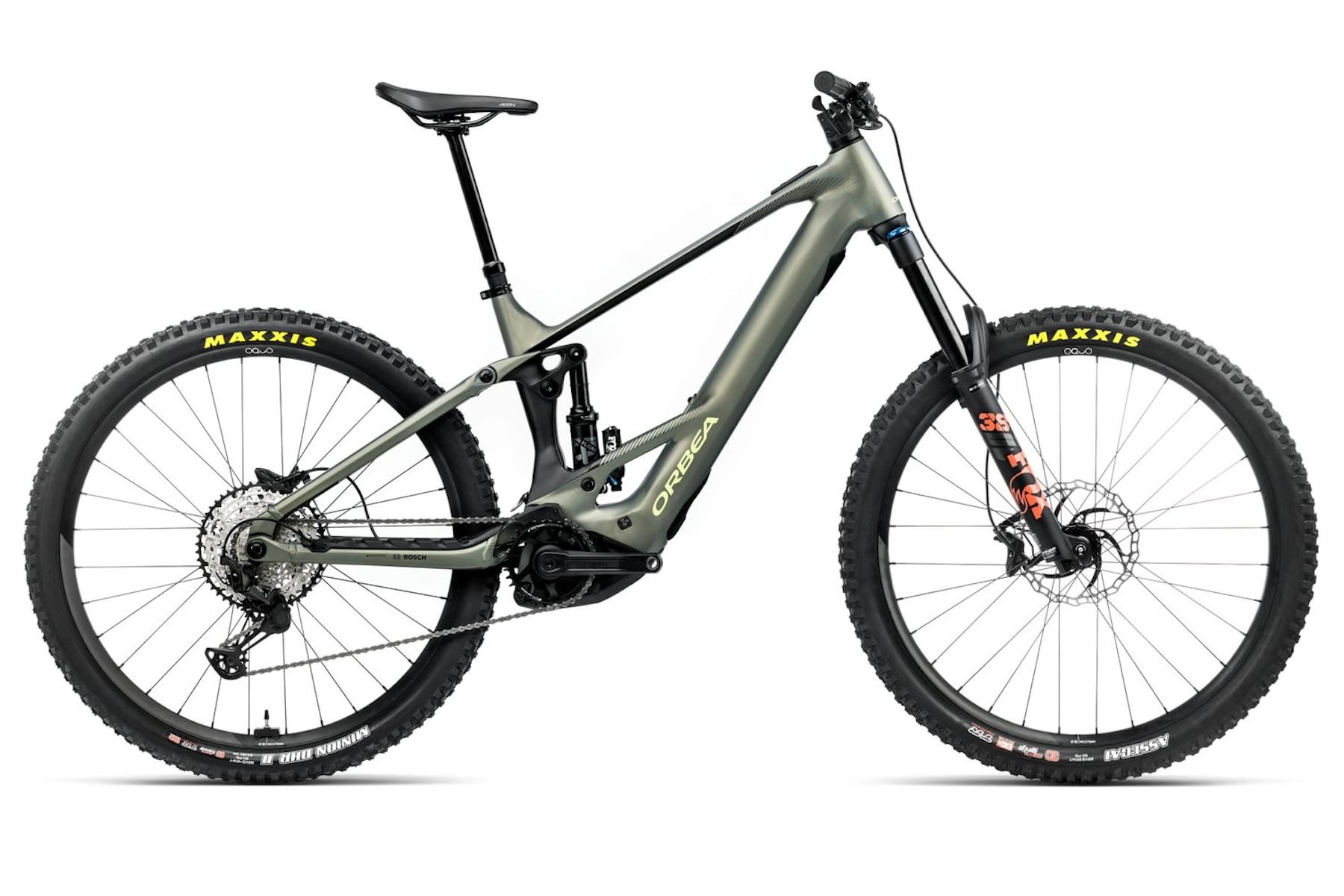
The Frames
Wild ST
Before we dive into the details of the Wild, let’s first take a look at its new, more conservative sibling — the Wild ST. The Wild ST is available with an aluminum frame only, with slightly less aggressive geometry and 150 mm of front and rear travel afforded by a shorter stroke shock. It’s also compatible with 29’’ wheels only, while the burlier Wild offers mixed wheel compatibility via a different upper link.
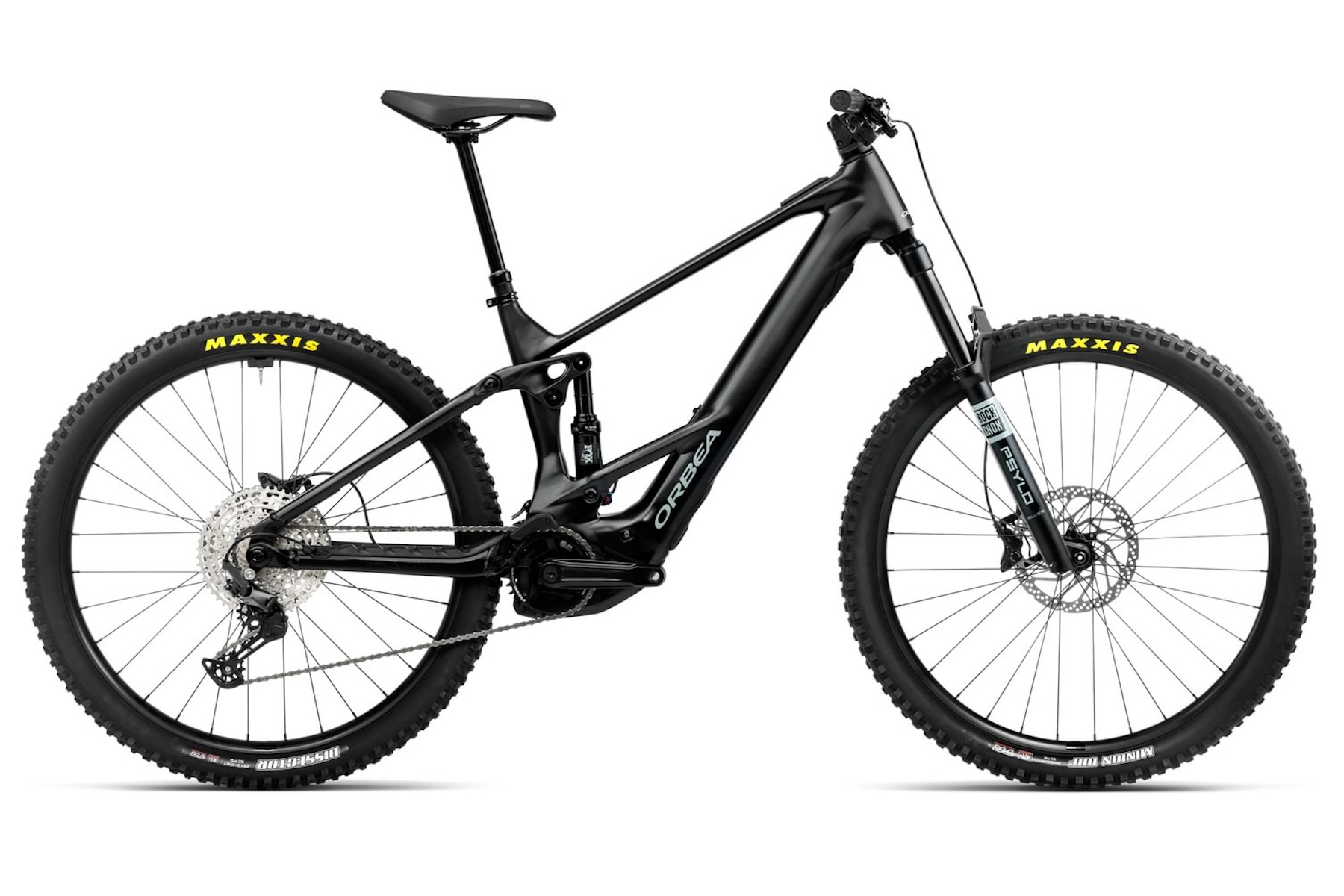
Outside of that, the Wild ST shares all of its features with the more aggressive Wild. That also means the same battery options, along with the same new Bosch Performance Line CX motor (more on both of those later). Given that, let’s jump to the details about the bigger, badder Wild.
Wild
Some World Cup Downhill fans may have noticed Martin Maes racing what looked like a Wild with a dual crown fork. As it turns out, that bike was the new Wild with the motor and battery removed, along with a different link to provide more travel. That alone makes it clear that Orbea has focused on descending performance with the new Wild, but there are more nuanced small tweaks than meets the eye.
As before, the Wild is still an Enduro-leaning eMTB offered in both carbon fiber and aluminum options. The alloy model looks quite sleek and almost carbon-like with its polished welds, though Orbea says that it adds a good bit of weight over the carbon fiber frame (the exact weight difference is not specified). The new model is compatible with either 29’’ or mixed wheels, with the switch requiring a quick swap of the upper rocker link.
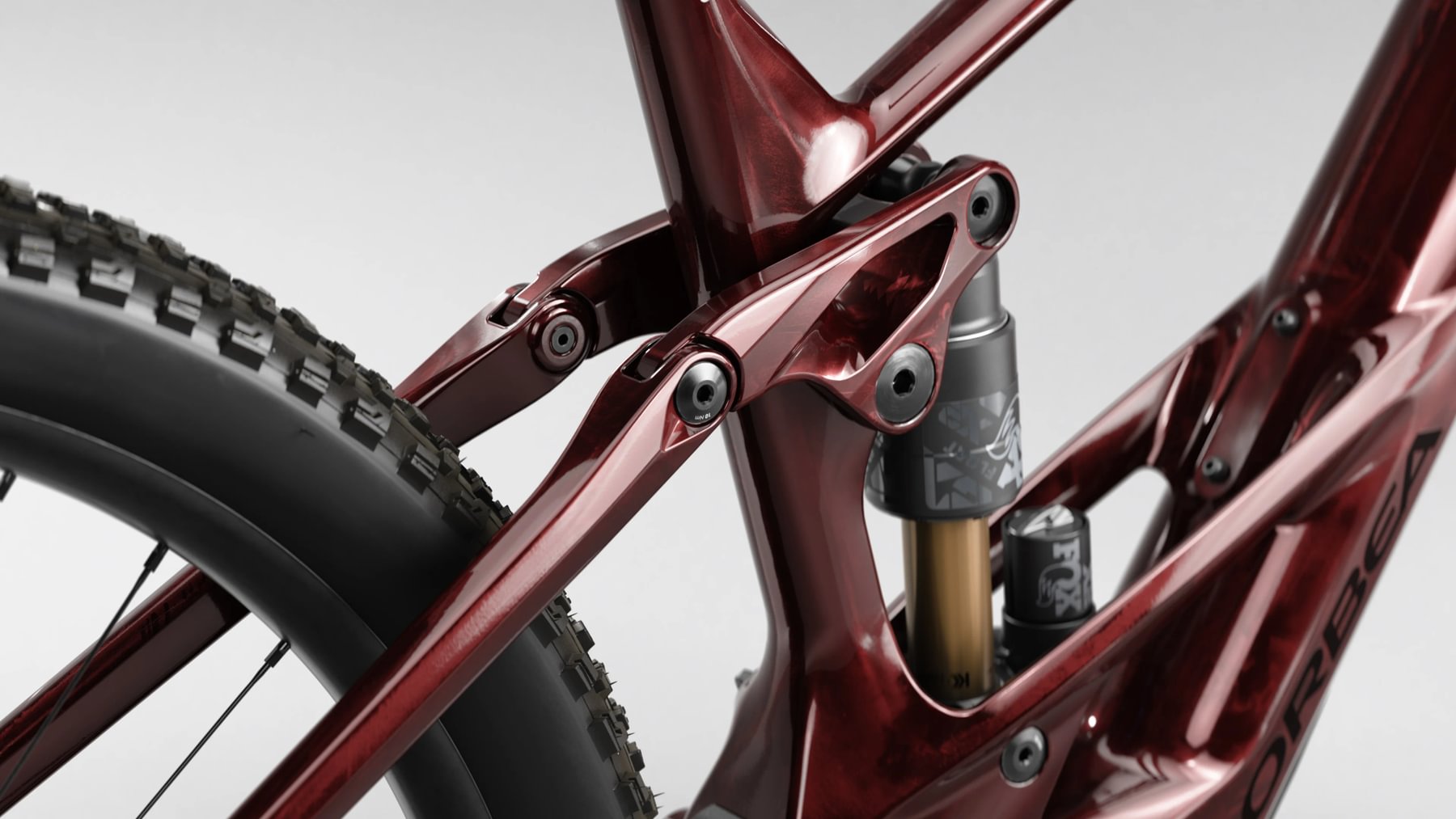
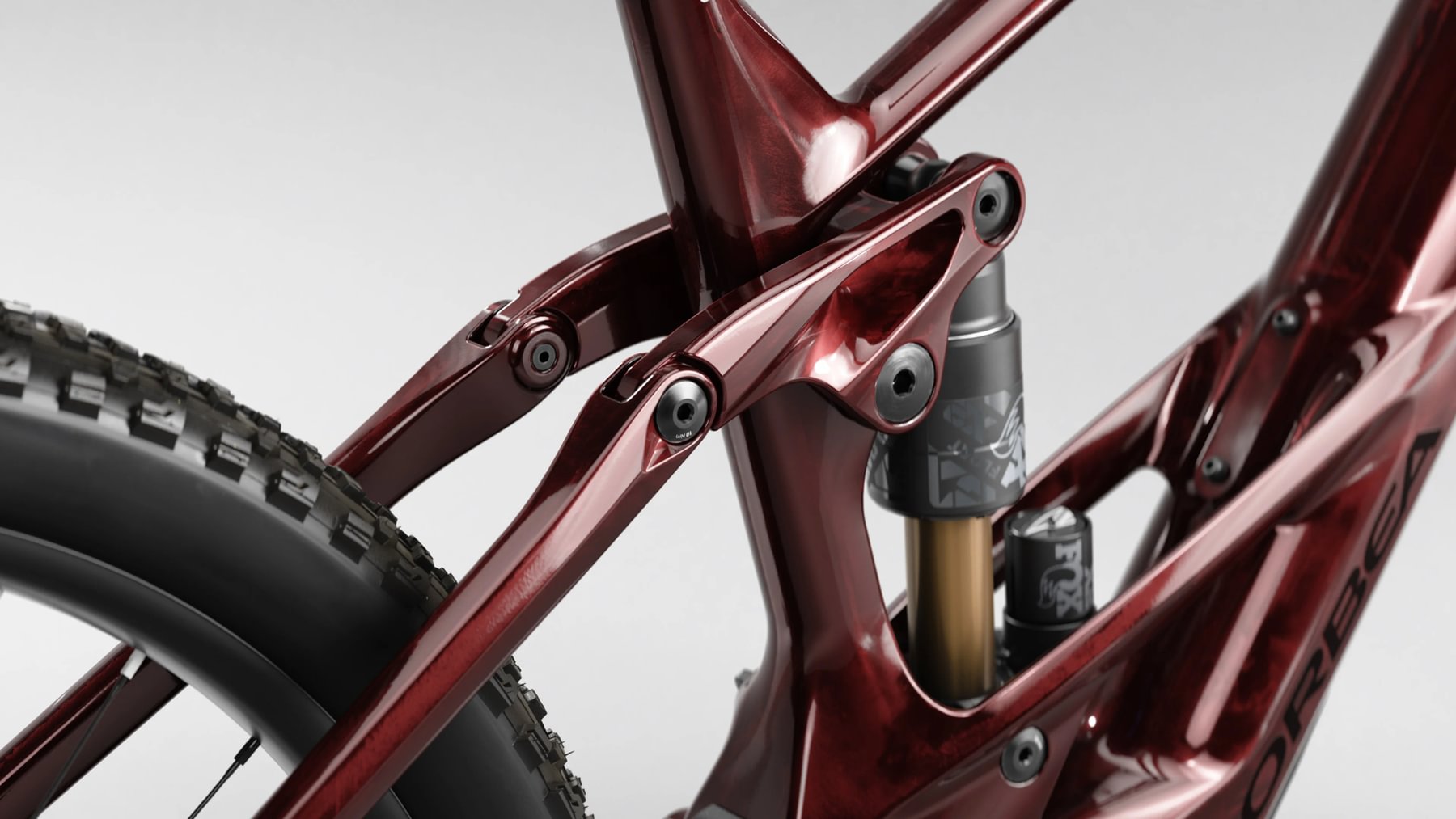
Eagle-eyed readers may notice some of the differences in the appearance of the main frame, specifically around the shock cage — much of which reflects some design changes aimed at reducing weight while maintaining a high degree of stiffness. As with the prior Wild, Orbea has opted not to provide any sort of hatch in the downtube for battery removal. This is very much intentional, as Orbea strongly asserts that large openings for easy battery removal result in too many compromises in frame stiffness, and ultimately a compromised ride quality.
Also in the name of ride quality, Orbea has designed custom battery hardware to allow the battery to sit as low in the frame as possible. This helps to lower the bike’s center of gravity, reducing the heavy battery’s effect on handling.
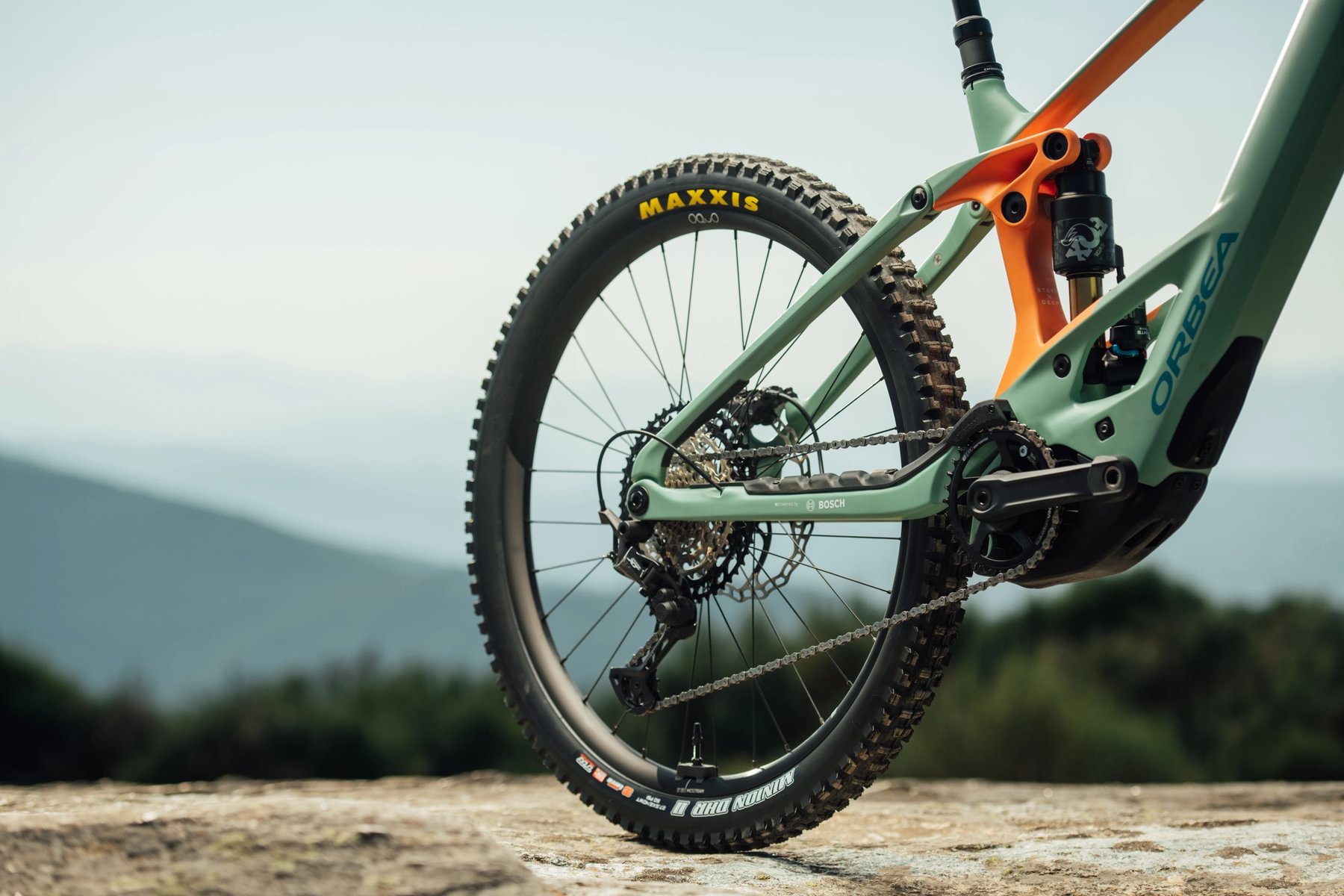
Orbea has also made some tweaks to the suspension kinematics, and the Wild now gets 170 mm of front and rear travel versus 160 mm of rear travel on the prior version. A higher starting leverage ratio follows a more progressive arc through the travel, helping to add additional bottom out support. Both anti-squat and anti-rise have seen very slight increases as well. Anti-squat remains fairly high for an eMTB at nearly 110% at sag, while anti-rise remains fairly low at just over 60% at sag. That anti-squat figure should mean that the Wild resists excessive suspension movement under pedaling forces, while the rear suspension should remain quite active under braking thanks to the low anti-rise.
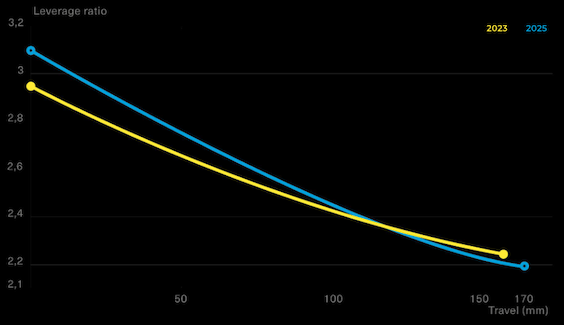
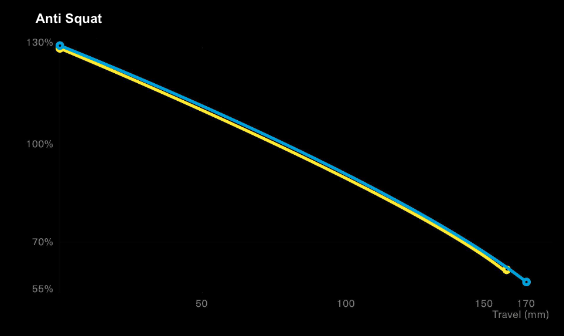
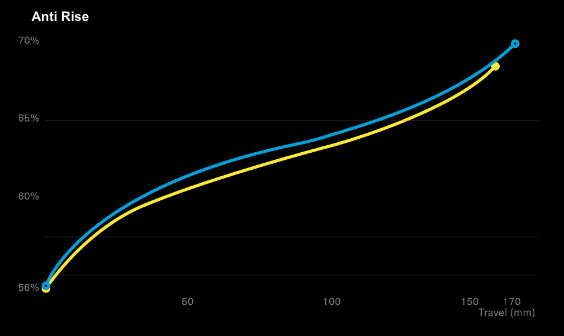
Otherwise, many familiar details remain. Cables are (unfortunately) routed through the headset, but all frame bearings are protected by additional rubber seals to keep moisture and grit at bay. Orbea uses a device called Spin Block in the headset to keep the bars from rotating beyond a certain point and potentially causing damage to cables and the frame, and carbon frames get Orbea’s Second Skin clear protective tape pre-installed from the factory in key areas on the frame to keep things looking fresh.
Drive System
The drive system is Bosch’s latest Performance Line CX, which was recently released and has correspondingly been highlighted on a number of other recently released eMTBs like the Santa Cruz Vala. The new drive unit is another example of refinement rather than an overhaul, and the new version still cranks out 85 Nm of torque and 600 W of peak power, but claims to be a bit quieter while dropping 100 grams of weight over the prior version.
Orbea has also added a new 600 Wh battery option, which cuts a full 3.3 lbs / 1.5 kg of weight out of the complete bike compared to the larger 750 Wh option. That’s a good chunk, and should go a long way toward making the Wild feel a bit less cumbersome from a handling perspective. Bosch’s PowerMore range extender is also available for an additional 250 Wh — in my view, the 600 Wh battery would be plenty of juice for daily riding while making for a significantly lighter bike, and bolting on the 250 Wh range extender could provide extra insurance for longer adventures.
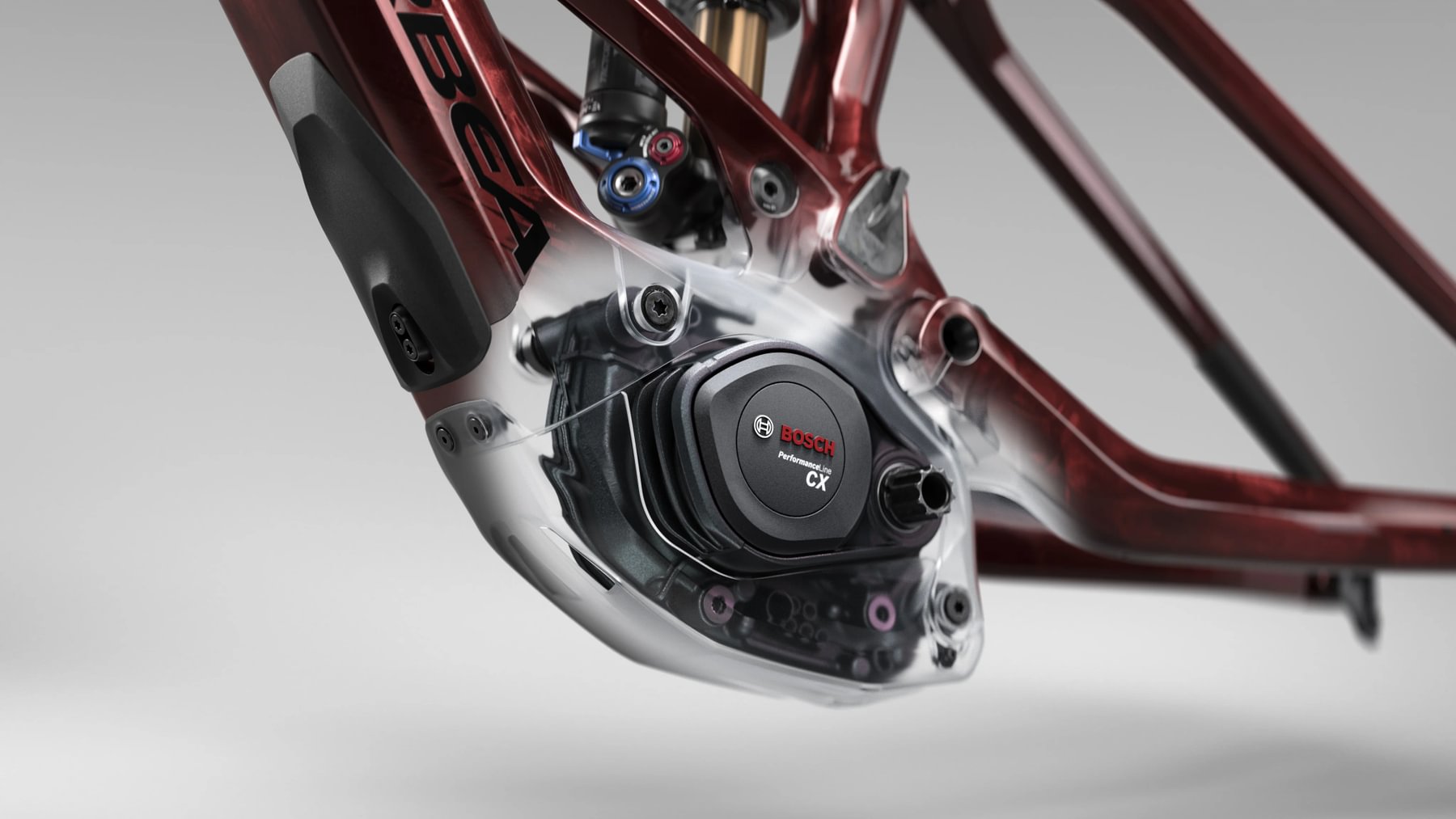
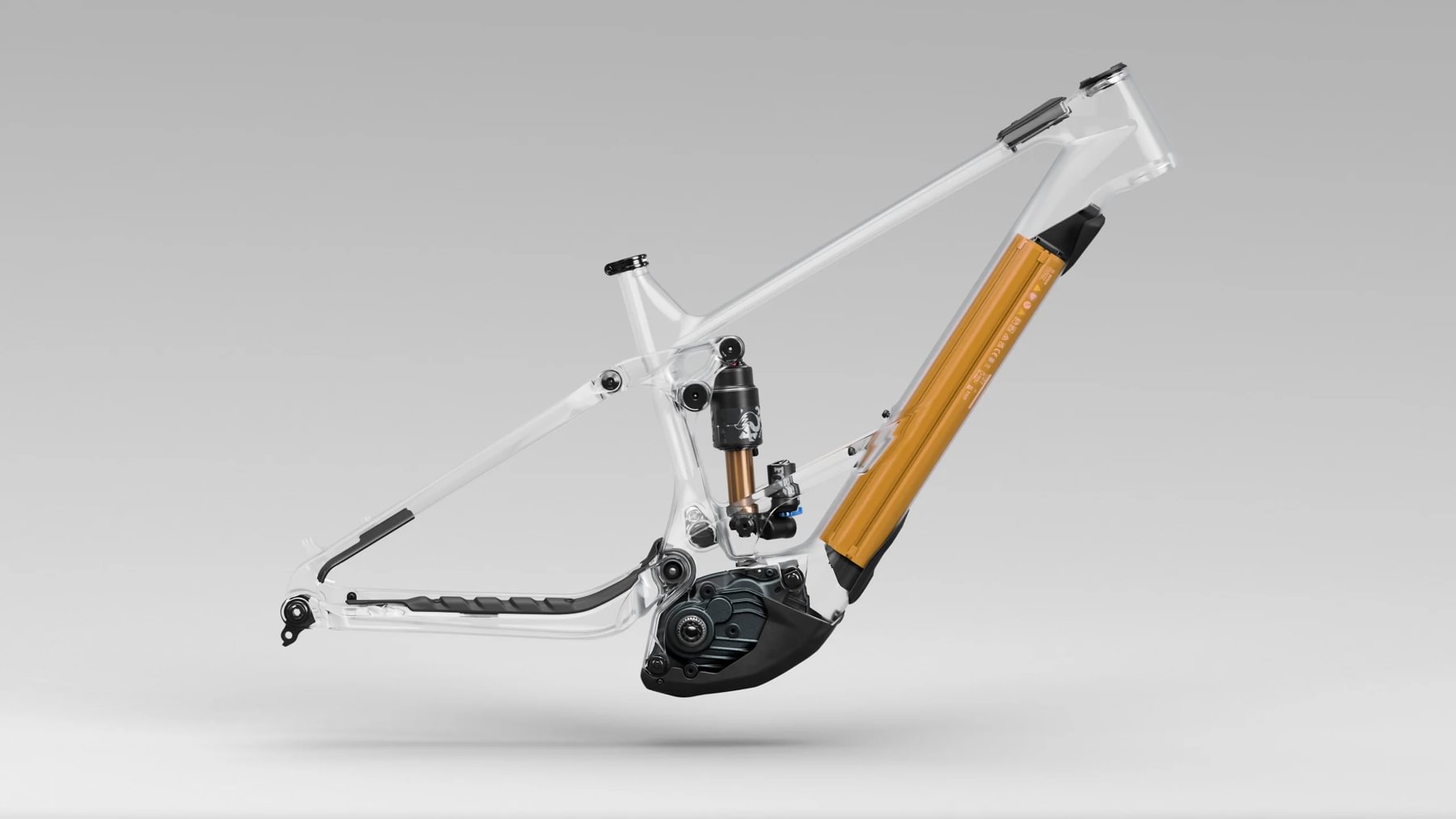
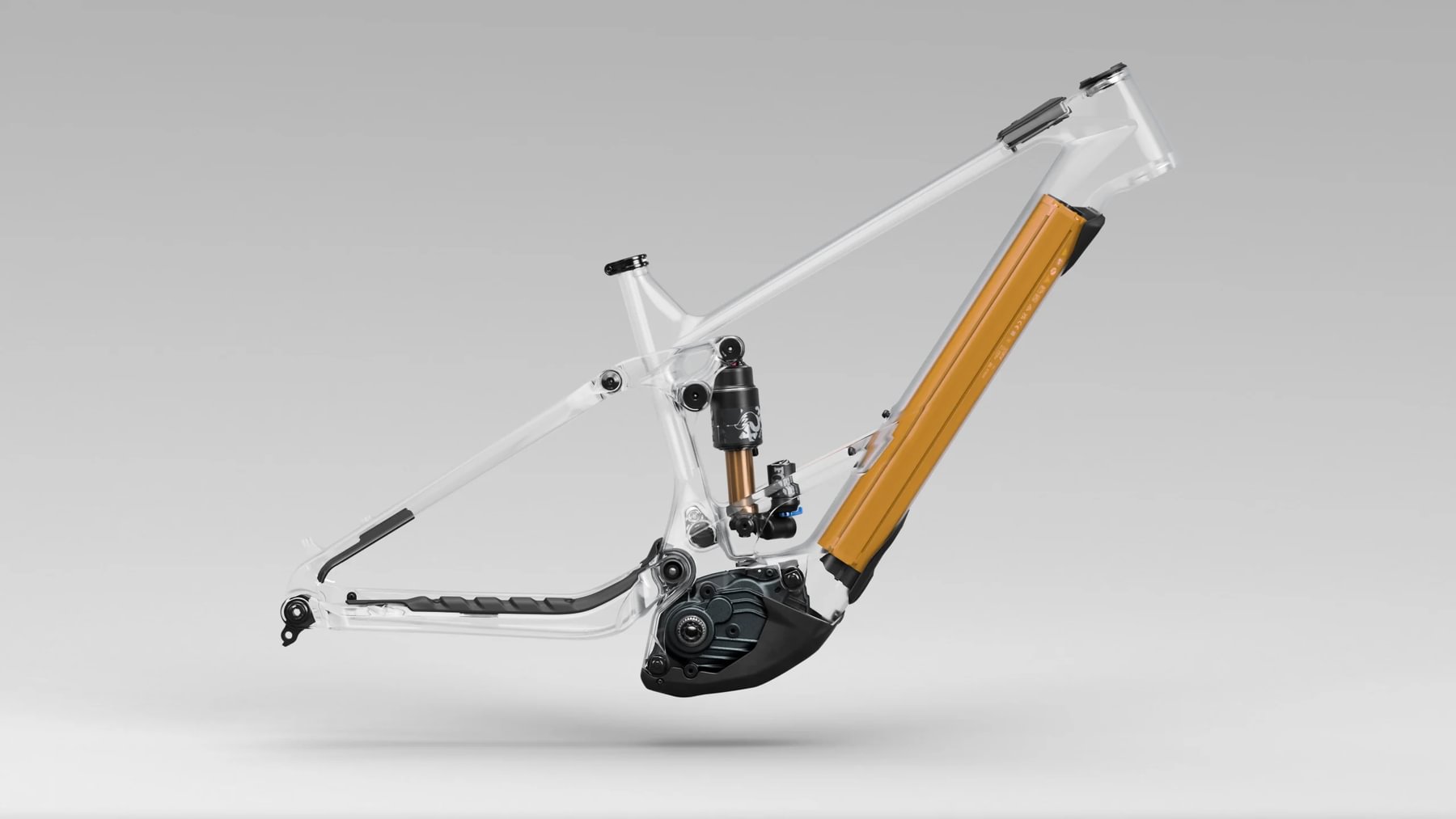
Fit & Geometry
Wild ST
As a Trail-oriented 150 mm travel eMTB, the Wild ST has some slightly more conservative geometry numbers that match its intentions. A 64.5° headtube angle is paired with a 484.5 mm reach on the size Large, along with a 637 mm stack height and steep 78.4° seat tube angle. It’s still a relatively long bike with a 1273 mm wheelbase and 448 mm chainstays, but that steeper headtube angle in particular should quicken up the handling a bit relative to its slacker big brother.
The Wild ST’s geometry chart is below:

Wild
Orbea’s refreshed Rallon landed earlier this year, with a bump in travel along with slightly more aggressive geometry. The Wild appears to have gotten the same treatment, with 170 mm of rear wheel travel matched to a slacker headtube angle. A size Large gets a 480 mm reach, 63.5° headtube angle (the old one was 64°) and a 643 mm stack. The effective top tube shrinks by 10 mm to 612 mm, which likely yields a shorter-feeling seated position. The same 77.5° seat tube angle remains, as do the 448 mm chainstays — those are consistent across all sizes.
Full geometry figures are as follows:

The Builds
Wild ST
As we mentioned earlier, the Wild ST is only available with an aluminum frame. Buyers have the choice between two builds — the Wild ST H20 and H30 — both of which are equipped with the Bosch Performance Line CX motor. The H30 is the cheaper of the two, and comes with a 600 Wh battery, while the more expensive H20 includes a larger 750 Wh battery. As with all Orbea bikes, their MyO customization program allows for plenty of customization, including choosing a different battery size (presumably with some cost savings or increase, depending on whether you’re going smaller or larger).
Orbea’s strong partnership with Fox continues with the Wild ST, with every bike in the Wild range getting a Fox rear shock. The Wild ST H30 still has a Fox rear shock, but the fork is a 150 mm travel RockShox Psylo — the more expensive H20 gets a Fox 36. Both bikes have full Shimano builds too for both drivetrain and brakes, and finishing parts like the handlebar, stem, and dropper are all from Orbea’s in-house OC component brand.
Full build details are as follows:
- Drivetrain: Shimano Deore M6100
- Brakes: Shimano MT420
- Fork: RockShox Psylo Silver RC (150 mm)
- Shock: Fox Float Performance
- Wheels: Alloy 32H
- Dropper Post: OC Mountain Control MC22 (170, 200, 230 mm options available)
- Drivetrain: Shimano Deore M6100 / SLX M7100
- Brakes: Shimano Deore M6120
- Fork: Fox 36 Float AWL HD Sport (150 mm)
- Shock: Fox Float Performance
- Wheels: Race Face AR 30
- Dropper Post: OC Mountain Control MC22 (170, 200, 230 mm options available)
Wild
The longer travel Wild has quite a few more build options than the Wild ST, with two aluminum and four carbon builds available. Fox provides the rear shock options across all builds, with the aluminum and two lower spec carbon models getting Float X units, while the two most expensive carbon builds get a Float X2. The carbon Wild M20 and aluminum Wild H20 both get RockShox Zeb Base forks, while all other models get the Fox 38.
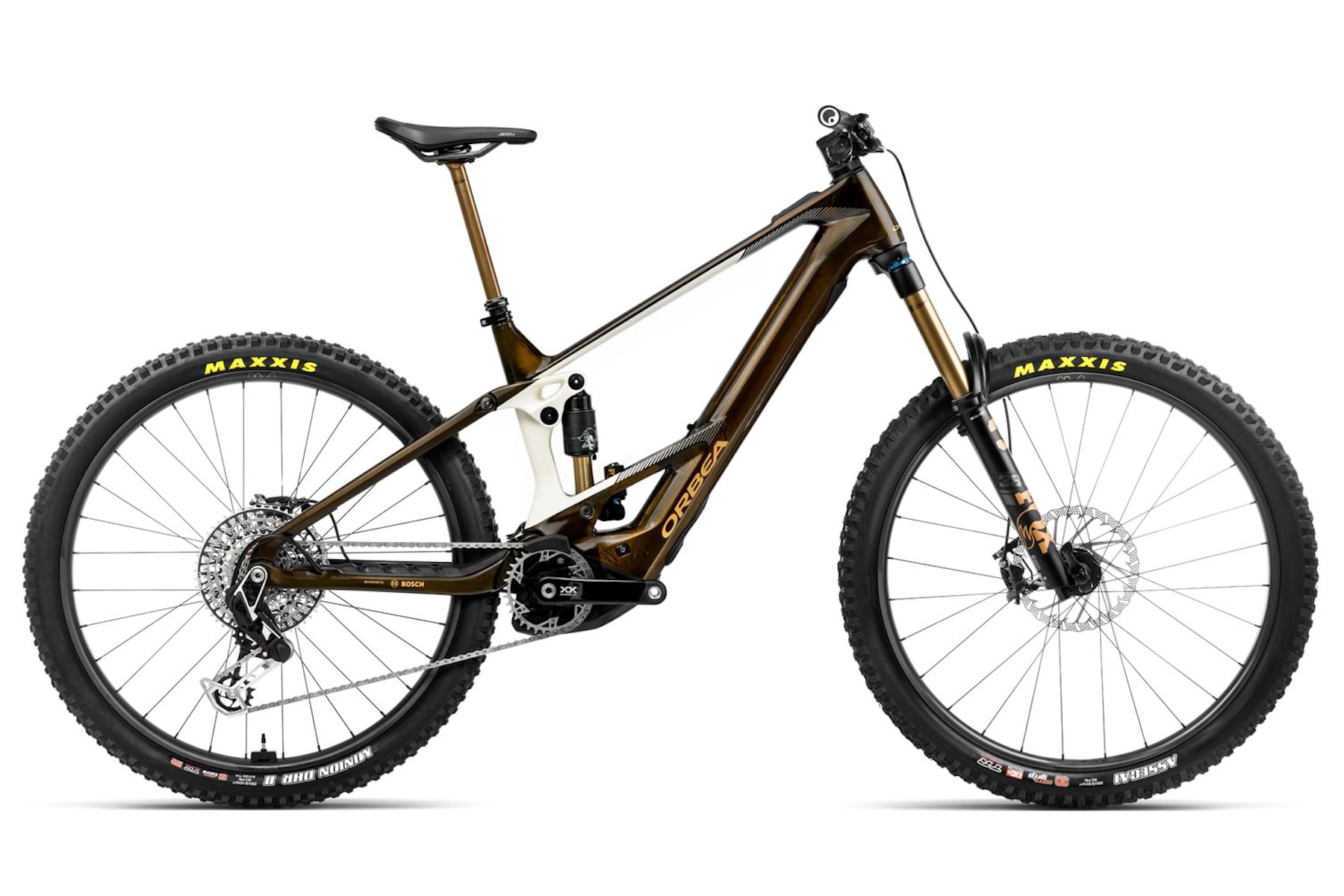
Shimano provides brakes across all builds, and every model also gets a Shimano drivetrain except for the range-topping Wild M-LTD, which goes electronic with SRAM’s XX Transmission group. Interestingly, the 750 Wh battery is stock on all except the top-step M-LTD build, which gets the smaller 600 Wh option. As mentioned with the Wild ST, battery size can be selected via the MyO configurator on Orbea’s website.
As a final note, all builds of the Wild come stock with 29’’ wheels, but Orbea offers a swap to a mixed wheel setup at the time of purchase — again via the MyO configurator.
Full build details are as follows:
- Drivetrain: Shimano Deore M6100
- Brakes: Shimano MT420
- Fork: RockShox Zeb Base (170 mm)
- Shock: Fox Float X Performance
- Wheels: Race Face AR 30
- Dropper Post: OC Mountain Control MC22 (170, 200, 230 mm options available)
- Drivetrain: Shimano Deore M6100 / SLX M7100 / XT M8100
- Brakes: Shimano Deore M6120
- Fork: Fox 38 Performance (170 mm)
- Shock: Fox Float X Performance
- Wheels: Oquo Mountain Control MC32TEAM Power
- Dropper Post: OC Mountain Control MC22 (170, 200, 230 mm options available)
- Drivetrain: Shimano Deore M6100 / SLX M7100
- Brakes: Shimano MT420
- Fork: RockShox Zeb Base (170 mm)
- Shock: Fox Float X Performance
- Wheels: Race Face AR 30
- Dropper Post: OC Mountain Control MC22 (170, 200, 230 mm options available)
- Drivetrain: Shimano SLX M7100 / XT M8100
- Brakes: Shimano XT M8120
- Fork: Fox 38 Performance (170 mm)
- Shock: Fox Float X Performance
- Wheels: Oquo Mountain Control MC32TEAM Power
- Dropper Post: OC Mountain Control MC22 (170, 200, 230 mm options available)
- Drivetrain: Shimano Deore M6100 / SLX M7100 / XT M8100
- Brakes: Shimano XT M8120
- Fork: Fox 38 Factory (170 mm)
- Shock: Fox X2 Factory
- Wheels: Oquo Mountain Control MC32TEAM Power
- Dropper Post: OC Mountain Control MC22 (170, 200, 230 mm options available)
- Drivetrain: SRAM XX Transmission
- Brakes: Shimano XTR M9120
- Fork: Fox 38 Factory (170 mm)
- Shock: Fox X2 Factory
- Wheels: Oquo Mountain Control MC32LTD Power
- Dropper Post: Fox Transfer Factory (150, 180, 210, 240 mm options available)
Some Questions / Things We’re Curious About
(1) The Wild has gotten some small tweaks over the old model, but based on our experience with the 2024 Rallon, those small tweaks can add up to noticeable improvements in descending confidence. Does the Wild follow that same trend set by the Rallon, or are the performance differences more subtle — or more significant?
(2) The 600 Wh battery shaves substantial weight from the system — but does it feel like a worthwhile compromise, or does its range feel limited compared to the 750 Wh one?
(3) How much of a difference is there between the updated Bosch Performance Line CX motor and the old one?
Bottom Line (For Now)
We were impressed with the latest Rallon and the impact that slightly more travel and some small geometry tweaks had on the overall ride. The Wild appears to have followed that same trend, while also dropping some weight thanks to the updated Bosch motor and a smaller battery option. Orbea seems to have resisted the urge to mess with a good thing, and we are very, very curious to get some time on this new Wild to see how it stacks up to the rather large crop of new eMTBs released late this summer.
